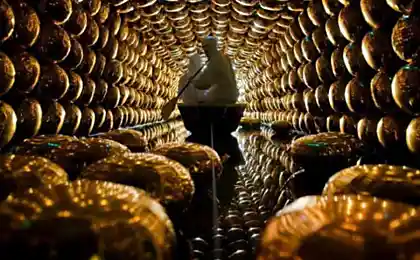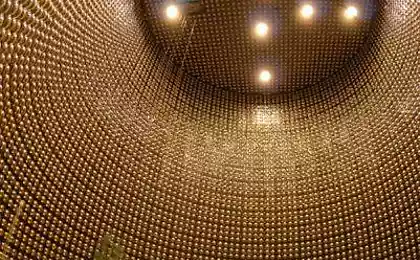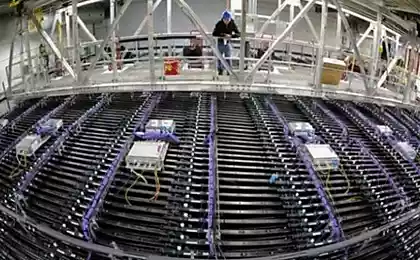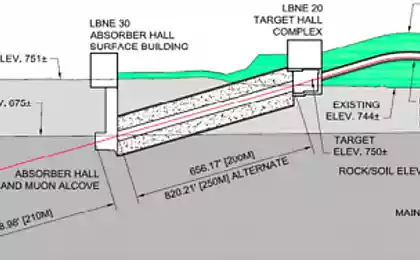1160
Super Kamiokande
The staff checks during filling neutrino detector Super-Kamiokande water.
The detector consists of a cylinder height of 42 m and a diameter of 40 m and a capacity of 50 000 tons of water.
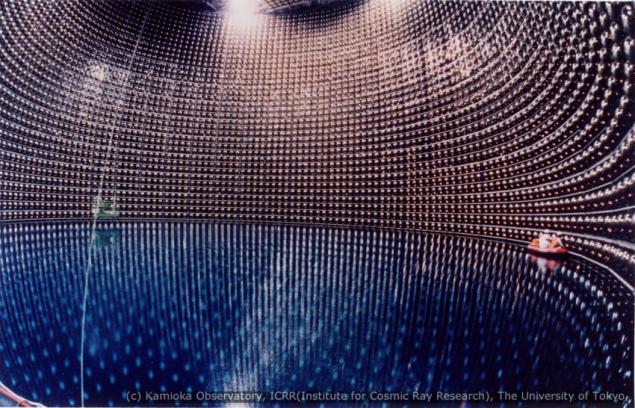
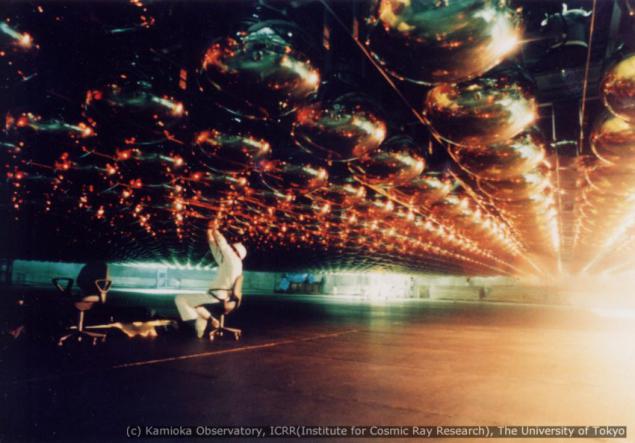
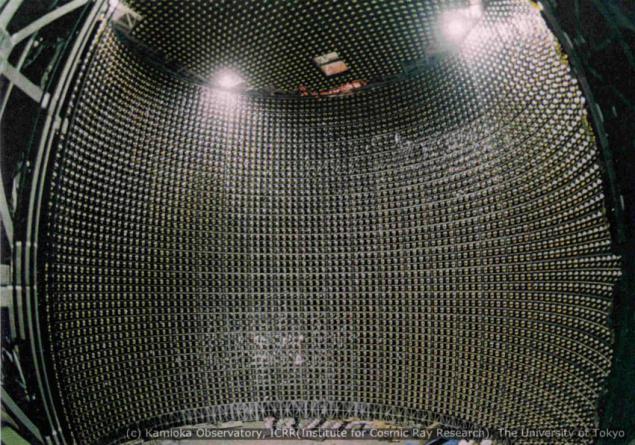
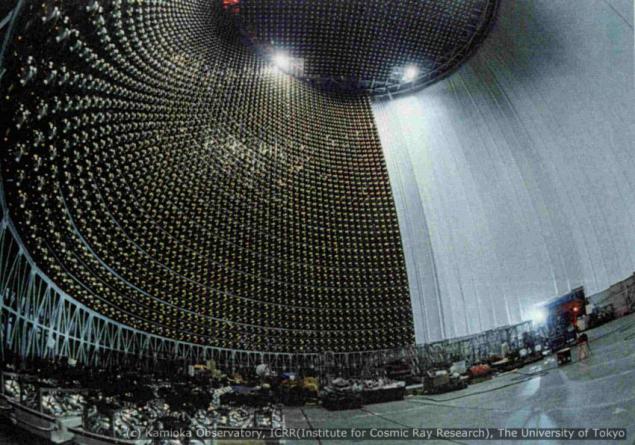
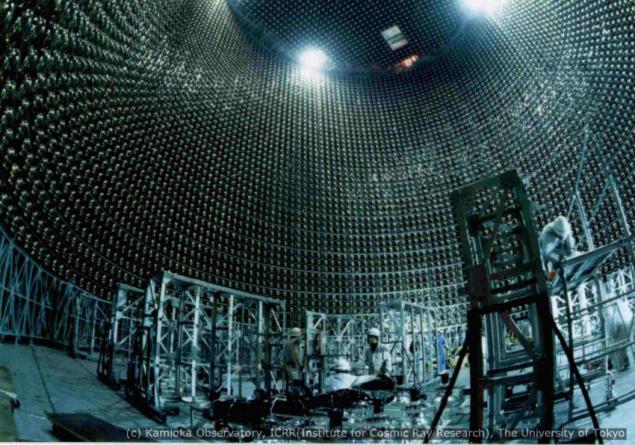
SuperKamiokande (or Super-K) - neutrino detector, which is an upgraded model Kamiokande-II. It is located in the Japanese laboratory at a depth of 1,000 meters in the Kamioka zinc mine, 180 miles north of Tokyo. The construction of the detector was made by a consortium of US and Japanese researchers, and was completed in 1996.
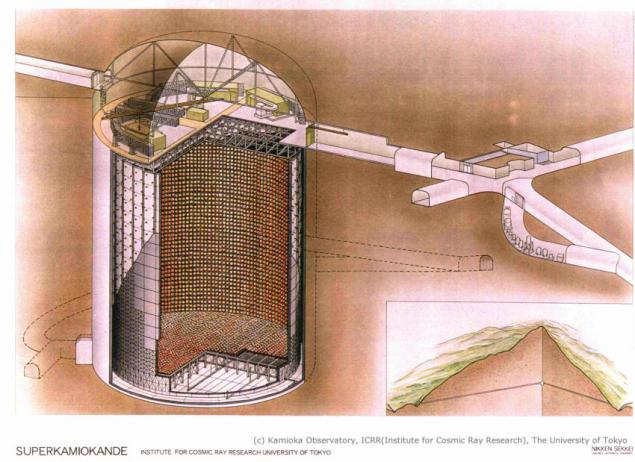
SuperKamiokande detector is a stainless steel tank, 42 meters high and 40 meters in diameter, filled with 50 thousand. Tonnes specially purified water. On the walls of the tank are located 11146 photomultiplier tube (PMT). Also, the detector is equipped with a large number of electronics, computers, calibration devices and equipment for water purification. It is extremely light-sensitive devices: in contact with the surface of even a single quantum of light they generate an electrical pulse, which is then treated with a special electronic system.
The discovery of the neutrino was due to the confidence of researchers in the justice fundamental laws of physics - the conservation laws. At the beginning of the XX century in the study of the beta decay of radioactive nuclei physics as meticulous accountants, we tried to reduce the balance of power. But he did not converge: the energy of the disappeared who knows where. Thus, under the threat turned out to be one of the fundamental laws of physics - the law of conservation of energy.
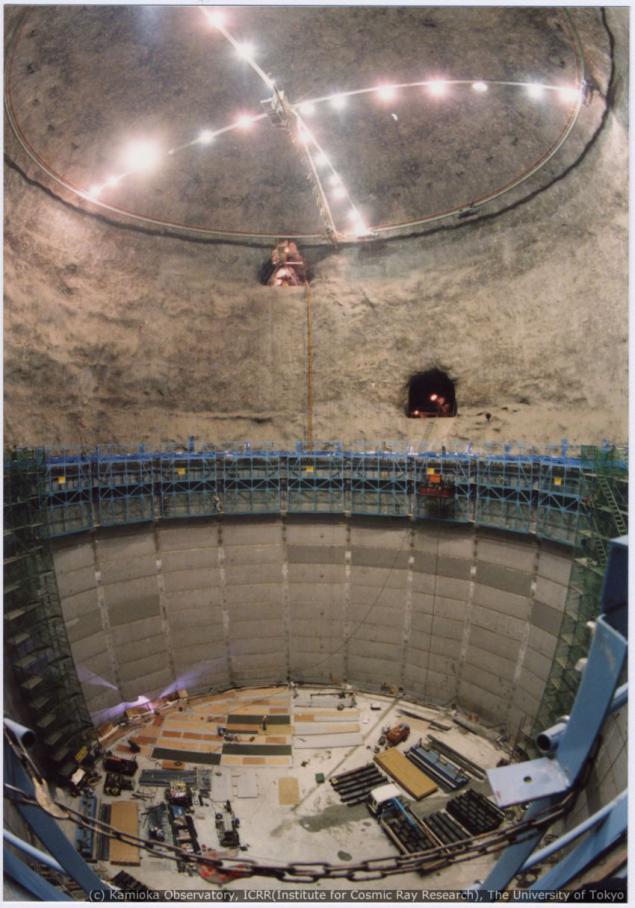
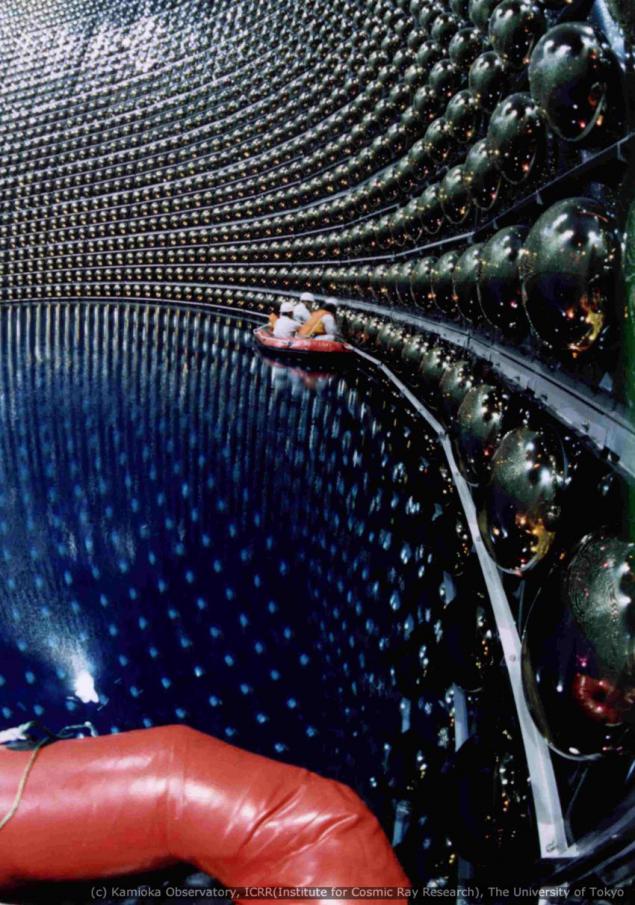
The giant structure, located on the bottom of the shaft kilometer of depth, a tank accommodating 50 thousand tons of water. On the walls of the tank are located 9000 photomultipliers - fragile vacuum tubes, recording weak flashes of light that occur when neutrinos collide with electrons in the water column. The incident occurred on November 12 began with the explosion of one of the photomultipliers - presumably because of too much water pressure to the device. Cause an explosion shock wave has led to a chain reaction and destroy seven thousand multipliers.
According to scientists, the restoration of the complex will take at least a year and about 30 million. Dollars - each of unexploded devices is almost 3000. However, the detector is planned to start as soon as possible - perhaps even after the restoration of its half. Popularity Super-Kamiokande experiment in 1998 brought in which were found signs of the mass of the neutrino. Over the confirmation of these results and have worked in recent years, researchers from the Kamioka Observatory, which owns the detector. - EZ
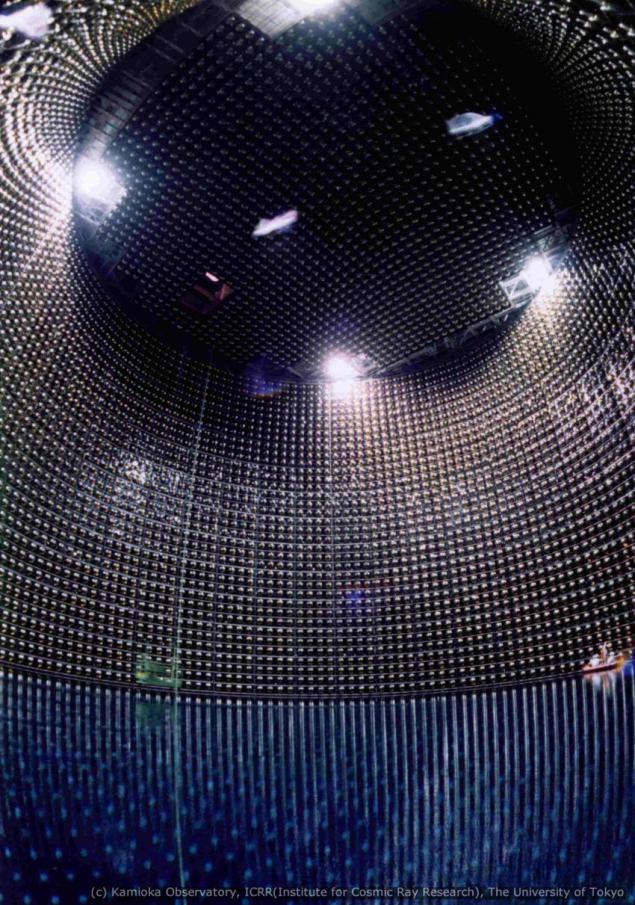
Source: www-sk.icrr.u-tokyo.ac.jp
The detector consists of a cylinder height of 42 m and a diameter of 40 m and a capacity of 50 000 tons of water.





SuperKamiokande (or Super-K) - neutrino detector, which is an upgraded model Kamiokande-II. It is located in the Japanese laboratory at a depth of 1,000 meters in the Kamioka zinc mine, 180 miles north of Tokyo. The construction of the detector was made by a consortium of US and Japanese researchers, and was completed in 1996.

SuperKamiokande detector is a stainless steel tank, 42 meters high and 40 meters in diameter, filled with 50 thousand. Tonnes specially purified water. On the walls of the tank are located 11146 photomultiplier tube (PMT). Also, the detector is equipped with a large number of electronics, computers, calibration devices and equipment for water purification. It is extremely light-sensitive devices: in contact with the surface of even a single quantum of light they generate an electrical pulse, which is then treated with a special electronic system.
The discovery of the neutrino was due to the confidence of researchers in the justice fundamental laws of physics - the conservation laws. At the beginning of the XX century in the study of the beta decay of radioactive nuclei physics as meticulous accountants, we tried to reduce the balance of power. But he did not converge: the energy of the disappeared who knows where. Thus, under the threat turned out to be one of the fundamental laws of physics - the law of conservation of energy.


The giant structure, located on the bottom of the shaft kilometer of depth, a tank accommodating 50 thousand tons of water. On the walls of the tank are located 9000 photomultipliers - fragile vacuum tubes, recording weak flashes of light that occur when neutrinos collide with electrons in the water column. The incident occurred on November 12 began with the explosion of one of the photomultipliers - presumably because of too much water pressure to the device. Cause an explosion shock wave has led to a chain reaction and destroy seven thousand multipliers.
According to scientists, the restoration of the complex will take at least a year and about 30 million. Dollars - each of unexploded devices is almost 3000. However, the detector is planned to start as soon as possible - perhaps even after the restoration of its half. Popularity Super-Kamiokande experiment in 1998 brought in which were found signs of the mass of the neutrino. Over the confirmation of these results and have worked in recent years, researchers from the Kamioka Observatory, which owns the detector. - EZ

Source: www-sk.icrr.u-tokyo.ac.jp





